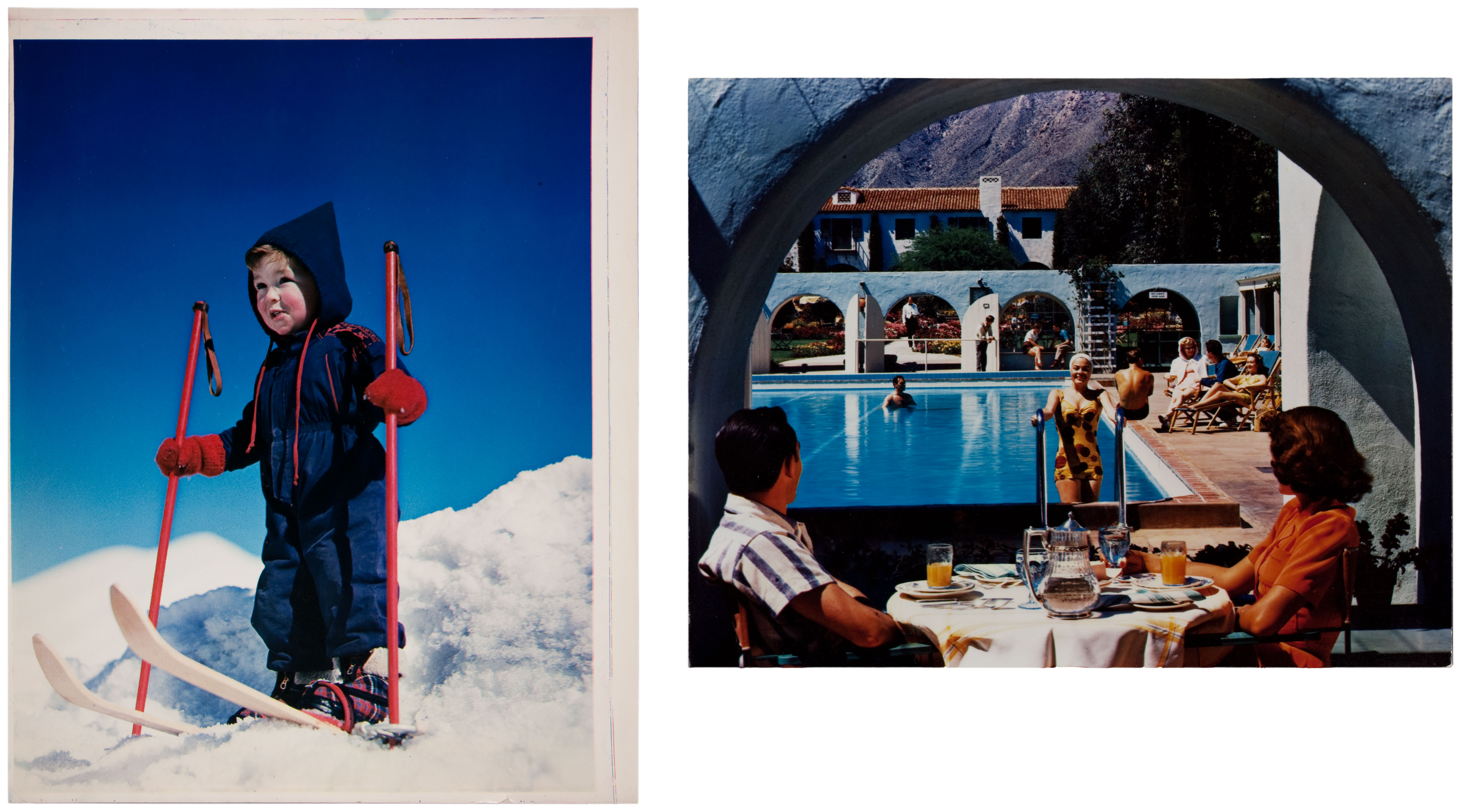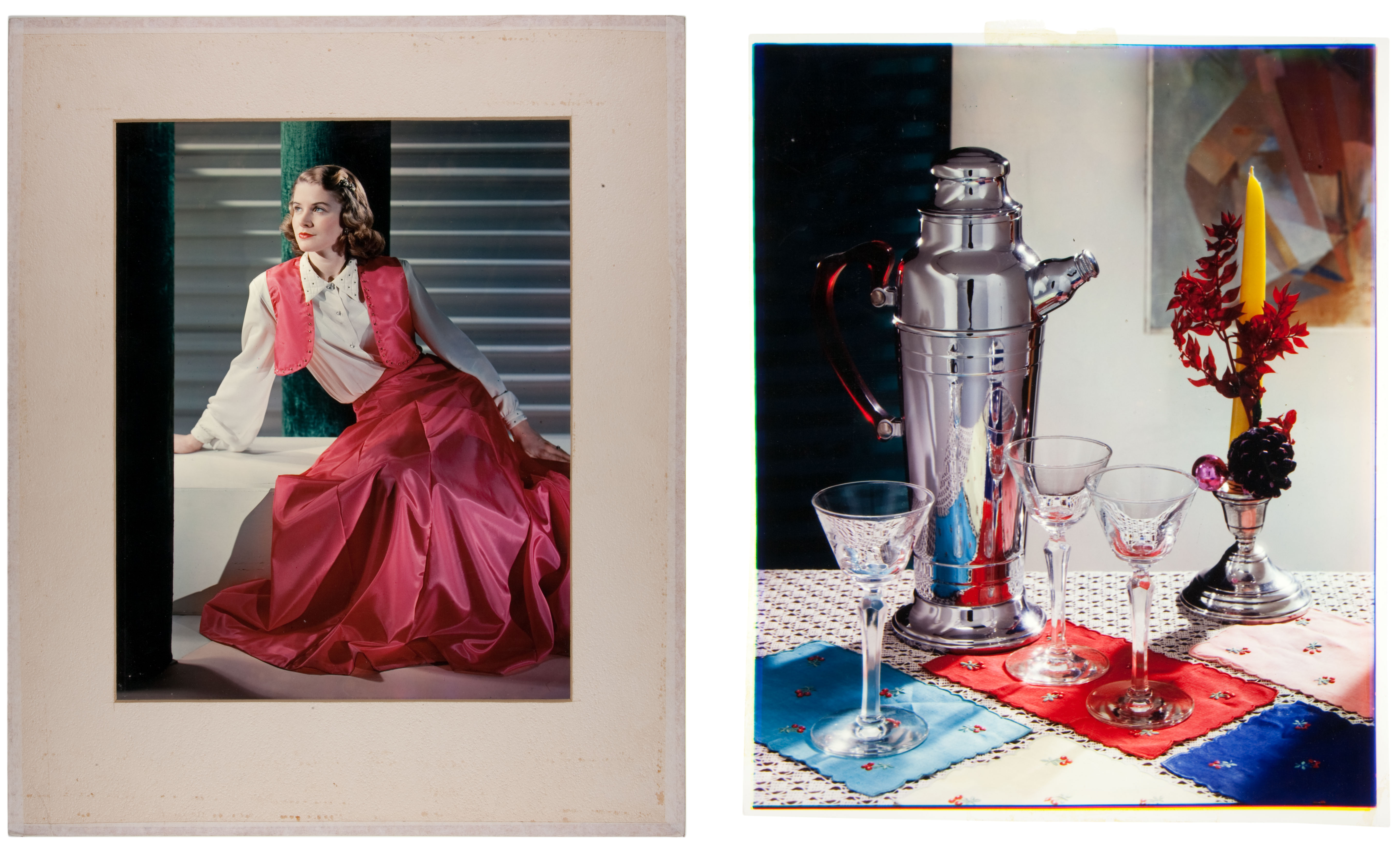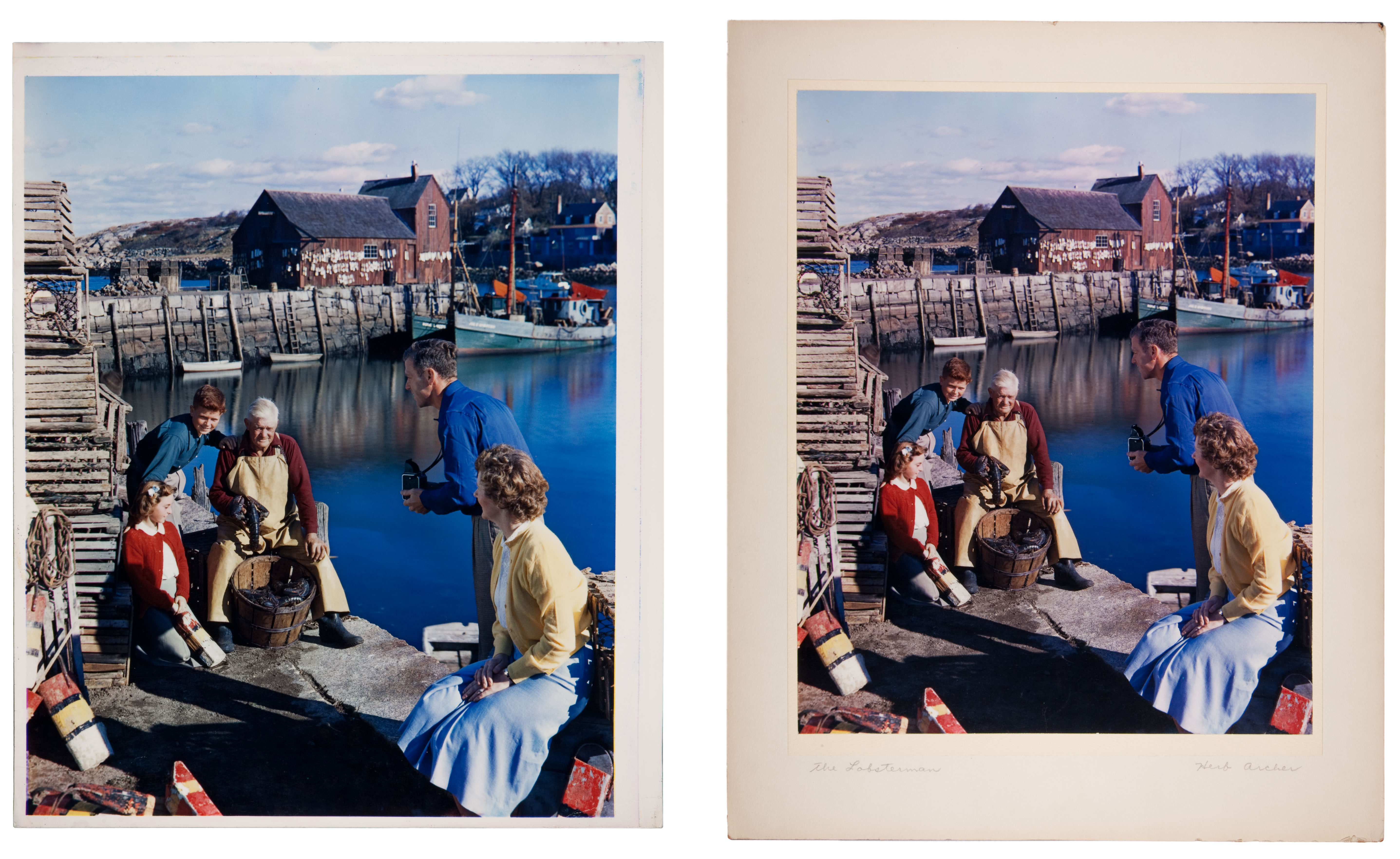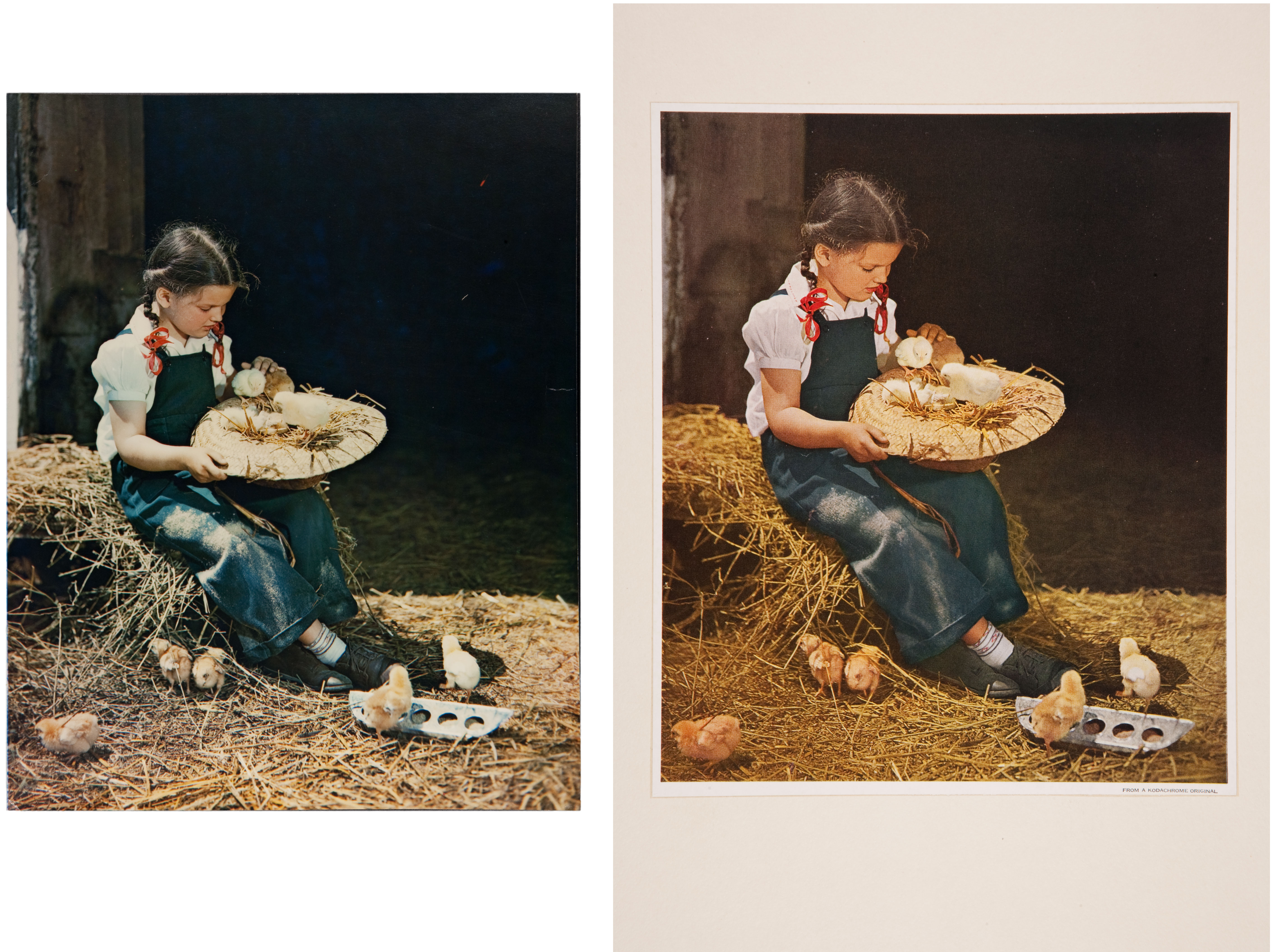Dye Imbibition Object View
Dye Transfer prints are typically on a paper support. The paper is a double-weight fiber-based gelatin coated bartya paper; it consists of three layers, a paper support, baryta layer, and gelatin. During manufacturing the paper was treated with a dye mordant to allow it to absorb the dye image. While less common, it was possible to produce a Dye Transfer transparency on a plastic support.

Dye Transfer are typically on a paper support. Prints with untrimmed boarder may show misregistration and white borders.

Dye Transfer transparencies have a cellulose acetate support and are fairly uncommon.
Dye transfer prints were made by creating three separation negatives; a green, red and blue record of the scene. These were printed onto matrix film (gelatin relief film) which were then each soaked in the complimentary subtractive color dye. The dye absorbed into the gelatin of the matrix film and then transferred and absorbed into the gelatin of the receiving paper. The color balance was controlled by altering the densities of the separation negatives and by altering the pH of the dye baths. The final image consists of cyan, magenta and yellow dye suspended in a single layer of gelatin. The vibrant, translucent quality of the color image is due to the use of dye suspended in gelatin, rather than pigment. The image is stable in dark storage.
Unlike chromogenic prints, they do not yellow in the borders and highlights. The image highlights could have a color cast due to the original color balance of the print, therefore the white borders are the best place to look for the lack of yellowing (note that not all chromogenic prints will have yellow borders).

Dye Transfer typically have a vibrant, translucent color quality with little to no fading. If borders are present they will be white.

These two prints have a different color balance. Incorrect color balance is often a printing error rather than deterioration. However, long term exposure to light will cause fading and color shift.

Dye Transfer displaced Carbro for color advertising. Here is the original Dye Transfer print (on the left) and the photomechanical reproduction (on the right).

Cyan, magenta, and yellow dye were absorbed into three separation matrices. The dye was transferred from the matrices to the receiving paper in exact registration.
Dye Transfer materials were commercially produced and available in standardized formats. Finished prints were commonly trimmed to remove the borders and mounted to a thick board, usually made of poor quality paper. Standard prints sizes: 5x7; 6 ½ x 8 ½; 8x10; 10x12; 11x14; 14x17; 16x20; 20x24, 24x28.
Dye Transfer was primarily used by advertising, fashion and fine art photographers. It is common for Dye Transfer to be inscribed with pertinent information.